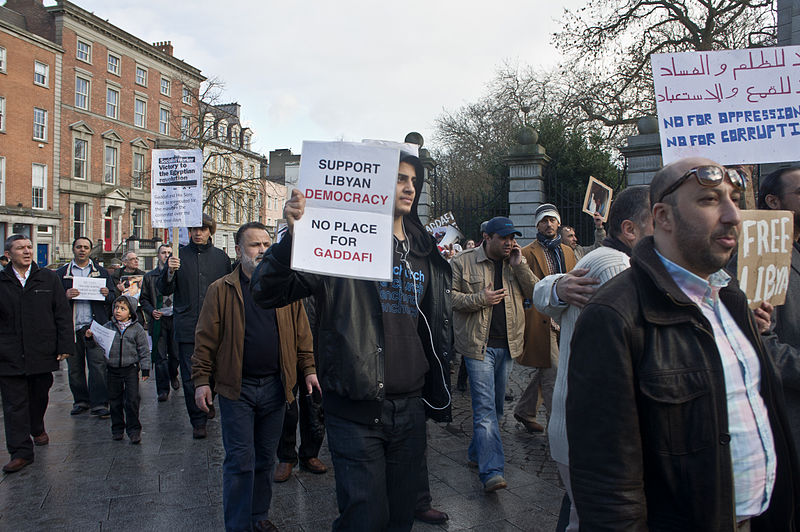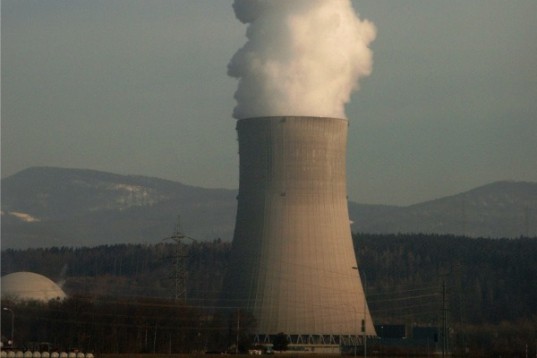One of the most interesting turn of events during the current nuclear crisis in Japan is how by Thursday, March 17, 2011 the ongoing drama of the catastrophe was displaced from the headlines by stories about the rebellion in Libya. Just as it seemed the story of the nuclear crisis came to a head with startling revelations about more widespread damages to the reactors, higher levels of radiation than previously detected, flaws in Japanese leadership and the contamination of food crops as far as ninety miles from the stricken Fukushima plant the media seems to have turned its attention to a different front.
By the end of the week stories about the escalation of the nuclear crisis and to a lesser degree, the aftermath of the earthquake and tsunami still appeared the media, but the headline grabbing story in the media has become the conflict in Libya. As catastrophic and unprecedented as the tragedy in Japan is, the media’s attention seems to have waned. One wonders if media gatekeepers sense that their consumers have tired of the drama in Japan, or perhaps because of the US’s primary role in the no-fly over zone, American and audiences are more concerned about events in Libya than in Japan. Or perhaps that warfare is more vivid than the invisible threat of radiation.
Historically, the media has always had a fairly short attention span for disasters, including even catastrophic ones like those that have occurred in the last year; beginning with the nightmarish earthquake in Haiti which destroyed the fragile infrastructure of a nation and whose toll took over 300,000 lives. The Haitian earthquake is a tragedy that is far from over and whose misery continues to unravel largely because of the lack of continued aid and attention from the international community.
As stunned as the world was by misfortune of Haitian people attention quickly turned to the more powerful, but less destructive quake in Chile. Then came the terrible floods in Pakistan, which killed of thousands and left a nation in anguish but received only little more than passing attention from the international press. The horrific and relentless floods in Australia captured the world’s attention very briefly despite the disturbing magnitude of the disaster. Next up was the recent earthquake in Christ Church, New Zealand. It made front-page news for a few days but now seems to have lapsed form the media and the public’s view.
None of this is new. The monstrous tsunami that that shocked the world and unleashed a flurry of destruction on several Southeast Asian nations made headlines for sometime. Nevertheless, despite the horrific magnitude of the event it slipped from the media’s radar. Eight months after the event, while the stricken nations were still struggling to recover Hurricane Katrina came ashore in the gulf. Almost without looking back, the media’s attention turned to the Gulf Coast and forgot the unparalleled tragedy in Southeast Asia.
As shocking as the media’s headlong pursuit of reporting the most recent sensational story and rapid abandonment of previous disasters it is an all too common pattern. One that perhaps reflects our modern day culture’s increasingly desensitized attention span for suffering and our addiction to ever more sensational stories.
The public, politicians and especially the media have a penchant for what seems like short-term memories when it comes to disasters. We tend to neglect the fact that major disasters have long-term, often second generation impacts that require us to invest in long-term recovery efforts rather than to take the band aid approach that typifies most modern day disaster response.
The media tends to only revisit earlier calamities with occasional anniversary stories. Such coverage often only consists of a retelling of the early days of the event and neglects the continuing plight of the disaster victims; thereby ignoring the fact that in the wake of calamity disasters continue to unfold for extended periods of time. Thus, the cascading series of events that unfold in the wake of most disasters are all but ignored except by the local media. Unfortunately, at times media retrospective accounts can downplay the seriousness of previous disasters as have some recent accounts that have surfaced during the current Japanese nuclear crisis. It causes one to wonder if revisionists accounts of Chernobyl are possible what future revisionist accounts might be made of the current nuclear crisis.
It is troubling to wonder how the media and our culture seem to take such vicarious interest in disasters. For disaster researchers like myself I am disturbed by what may be another tendency: our refusal, despite irrevocable empirical evidence to the contrary, to recognize that in recent years the frequency, magnitude and severity of disasters has increased tremendously,
The recent tide of major catastrophic events underscore the emerging reality that there is an urgent need to develop the conceptual tools, strategic and material tools to confront the increasing challenges of disasters which have been made more potent and complex by environmental degradation, climate change, and the increasing production of technological hazards. In another words, rather than continuing to view catastrophic events as isolated episodes we need to systematically examine the cumulative forces that confront us in the guise of disasters and begin to address the larger issue: why is it that disasters of such magnitude are becoming so commonplace?
Gregory Button has been researching disasters for over three decades. His most recent book is: Disaster Culture: Knowledge and Uncertainty in the Wake of Human and Environmental Disasters (Left Coast Press 2010). He is an Assistant Professor in the Department of Anthropology at The University of Tennessee Knoxville.




